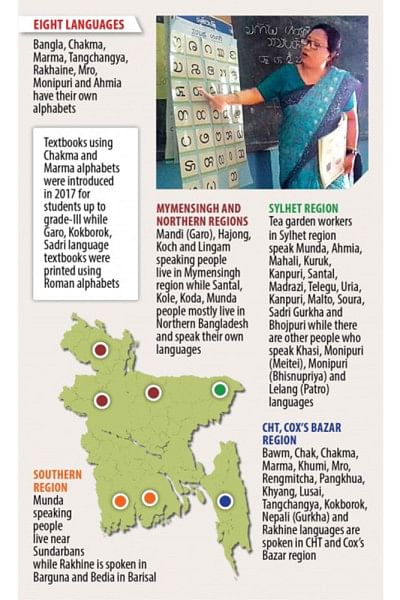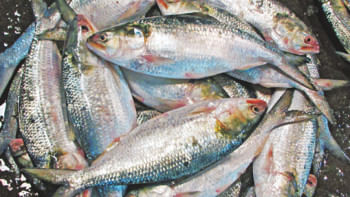Let all languages live

As we observed the International Mother Language Day, remembered our language martyrs with respect, expressed our love for our mother tongue and urged the government to ensure the use of Bangla in all spheres of life, including in higher education, we seemed to have forgotten about many of the indigenous communities of the country, whose mother language are facing the threat of being lost forever. As The Daily Star reported on Sunday, 14 indigenous languages—Kondo, Kharia, Koda, Soura, Mundari, Kole, Malto, Khumi, Pangkhua, Rengmitcha, Chak, Khyang, Lusai, and Laleng (Patro)—are on the verge of extinction because the number of their users have diminished. According to experts, a language is considered to be endangered when it is spoken by less than 5,000 people. Sadly, the situation of the languages we are talking about is so dire that they are now spoken by only 10 to 12 elderly people of their communities.
As Unesco describes, "a language disappears when its speakers disappear or when they shift to speaking another language—most often, a larger language used by a more powerful group." While this could be a major reason why these 14 languages are in such danger, there must be other economic, religious and social factors that contributed to this situation. By now we know how the dominance of the Bangla language over other indigenous languages in the hills and plainlands has led many indigenous communities to speak Bangla instead of their own language. Another major threat that these languages face is that they are not used to educate the children from these communities. Although every child has the right to study in their mother tongue up to the primary level in our country, not much effort has been made to ensure that. Moreover, the languages which do not have their own alphabets face even greater threat of going extinct compared to those that have alphabets. Observing the International Mother Language Day will be all the more meaningful when all the indigenous people of the country are able to speak their mother tongue and get educated in their own language. A lot of effort is needed from the government and other stakeholders to ensure this. And steps also need to be taken to preserve the languages that are now spoken by only a few elderly people of the communities. Only documenting these languages is not enough to save them. We think forming a language commission to save the endangered languages, as suggested by experts, would be a wise decision.

 For all latest news, follow The Daily Star's Google News channel.
For all latest news, follow The Daily Star's Google News channel. 



Comments